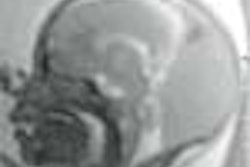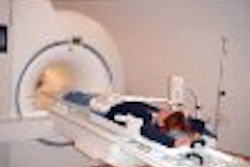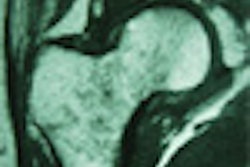While experts agree that MRI and CT are sensitive and accurate for detecting internal derangement in children with TMJ disorder, both modalities have their drawbacks. MR is expensive, while CT brings up the touchy issue of radiation exposure in children.
So investigators in Japan have proposed a third option: ultrasound, which may not be perfect, but does have its advantages. In a study published in the latest issue of the American Journal of Neuroradiology, a group from Niigata University compared ultrasound with MR and CT for pinpointing internal derangement in asymptomatic patients with temporomandibular joint (TMJ) abnormalities.
"Although the majority of patients with TMJ symptoms have internal derangement of the TMJ, it has been suggested that disk placement is not always associated with TMJ symptoms," wrote Dr. Takafumi Hayashi and his co-authors from the departments of oral and maxillofacial radiology and orthodontics. "Sonography is an ideal method for this purpose, because it is noninvasive and less expensive to perform [and] can provide information about the disk displacement of TMJ" (AJNR, April 2001, Vol.22:4, pp.728-734).
The patient population consisted of 18 children without subjective TMJ symptoms, who were enrolled in the study from October 1996 to March 2000. All of the children were examined with sonography, which was followed up with an MR or CT exam within two months.
Sonography was performed with a high-resolution scanner equipped with a 10-MHz mechanical sector transducer or an 8-MHz linear transducer. Helical CT scans were taken parallel to the anthropologic baseline over a distance of 5 cm, 120 kV, 100 mA, with 1-mm collimation. The scanning table was advanced at 1 mm per rotation.
Finally, MRI was performed on either a 1-tesla or a 1.5-tesla machine with either two TMJ surface coils or a head coil. T1-weighted transverse axial spin-echo and proton density-weighted images were obtained. The field of view was 150 mm x 150 mm with a slice thickness of 3 mm and no interslice gap.
According to the results, ultrasound was not able to identify the articular disk in all 36 joints of 18 children. The cut-off distance between the articular capsule and the lateral surface of the mandibular condyle was 4 mm. The ultrasound exam revealed a 4-mm measurement in seven joints, giving the modality a sensitivity of 83%, specificity of 96%, and accuracy of 92%.
In comparison, MR and/or helical CT examination revealed a distance of 4 mm in 10 of 11 joints. Based on previous research, the sensitivity of MR for revealing disk position in TMJ was 90%, the specificity 100%, and the accuracy 95%, the authors wrote. Helical CT came in at 91% sensitivity, 100% specificity, and 97% accuracy.
Besides its ease of use and low cost, the main advantage of ultrasound in TMJ is its ability to find a widened distance between the articular capsule and the mandibular condyle, which can result from the interposition of a displaced disk, they concluded.
"It is not practical to examine every child with MR imaging or helical CT," the authors wrote. "Although sonography [is] slightly inferior, we considered it a useful imaging method for longitudinal investigations."
By Shalmali PalAuntMinnie.com staff writer
April 25, 2001
Click here to post your comments about this story. Please include the headline of the article in your message.
Copyright © 2001 AuntMinnie.com




















